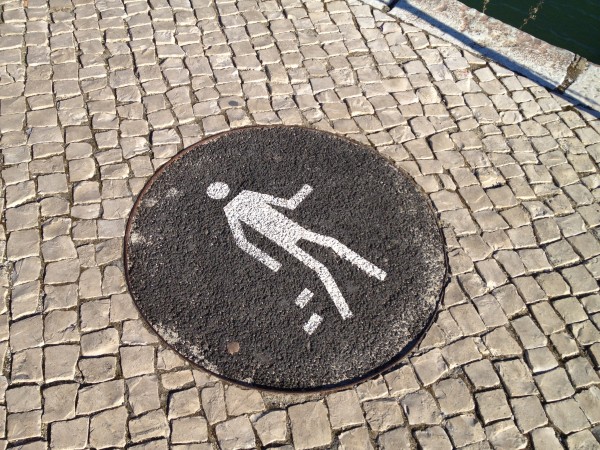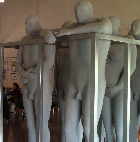Latest in the Section
- Facebook vs. Twitter: Where spend on advertising? (Part II)
- 2013 Income Statement
- An independent study "by and for the Job"
- Facebook vs. Twitter: Where spend on advertising? (Part I)
- The blog of creative territory is a shame! (Read it before it gets deleted)
- Social conversations in the Internet of Things
- The best strategy is social innovation in retail
- # Socialholic first birthday
- How to create a corporate blog. The example of the Magi
- When will the real future?
Popular in the Section
- Loans Junta de Andalucia
- I need $ 3,000
- 2010: the year of Facebook
- Euribor 2010
- Ambush Marketing: Ethics VS. Effectiveness
- Caja Murcia, Caja Granada, Sa Nostra, Caixa Penedes perform a cold fusion
- Measure and Analyze: Find the ideal KPI
- Forecast Euribor July 2010
- A bad example of Social Media: Chase Community Giving
- Holy Week 2011
Social conversations in the Internet of Things |
 |
 |
| World & Business - Marketing | |||
| Wednesday, 09 January 2013 10:51 | |||
|
According to the U.S. multinational CISCO, in just seven years the world will have more than 50,000 million connected objects . The key, thanks to the miniaturization of technology and the popularization of open hardware platforms like Arduino , is the widespread use of smart tags and sensors implanted in all kinds of tools and materials. No wonder, the Internet of things is regarded as yet another technological revolution of our century, in line with other emerging phenomena such as Big Data . But its disruptive character comes not so much the number or quality of technical innovations and the associated carrying their social reach. This planet of online objects opens, in fact, new and exciting horizons of reflection. For example, the idea that, by connecting massive things Internet, the World Wide Web is no longer a space exclusively human or become a virtual universe beyond which, paradoxically, the existence and identity of people will be increasingly unrecognizable. No matter their size or nature. Everything can connect to the Internet. From a programmable mobile bulb to a scale that monitors Web via our physical state . Also, an infinite range of equipment dedicated to the management of household electricity consumption , the automatic control of crops or the collection of municipal solid waste . Even living things can be part of the Internet of things, whether an avid plant care , a sick cow or calving animal , or a person with cardiovascular problems . In the words of Jules Verne, a man just imagine one thing for another to turn into reality. Our smartphones, without going any further, are part of this ecosystem animated: collect environmental stimuli (among others, the level of noise and the intensity of sunlight), the layers contextualized by additional information (such as photographs or social labels ) and "talk" with other devices (such as a printer or a wifi vending machine ). In this way, real-time release apprehended and share experiences on the Web (as, in some cases, the geographic positioning of the unit itself). And objects connected to the Internet of Things offers four basic levels of interaction :
Our physical world becomes, in this way, in an almost infinite universe where the most valuable data is not the simple accumulation of these resources but its gradual transformation into information, knowledge and, ultimately, in global knowledge. This is possible due to increasingly complex levels of interaction between users within the system and / or between objects by manual analysis or automatic application of certain algorithms. In any case, the extension of the Internet of things to all sectors and activities of the planet, from the automotive industry , the retail market , the telemedicine or environmental protection , open space for discussion even less explored than the networked learning or studying massive information. The first has to do with the social nature of the Internet, emerged at the end of the decade of the 60s of XX century to facilitate precisely human communication. But since 2008 it is estimated that there are now more things connected to the Internet than people. Today, probably more than 25,000 million objects in front of less than 2,300 million users . Soon there will also be more objects "talking" to each other than people talking on the internet. Blinds, heating, refrigeration or lights of our home can intercommunicate with each other and independently change state according to the shared values of time of day, temperature, humidity and ambient brightness. Even automatically sort certain purchases, request a repair service when it detects a fault itself or a particular message posted on the Internet. What all this tells us is that, for the first time since its inception, the Network will no longer be exclusively human. Moreover, we can tell you there and stay "alive" without our participation. In this scenario, there is the paradox of the objects that are conducive to human conversations. We may, in fact, meet communities organized around the "comments" that generate certain objects and not the opinions of others. For example, about taking data and Internet broadcasts the weather station in our neighborhood or incidents that automatically diffuses into Twitter's network of roads in our region. One example is in Facebook applications sharing the results of a personal physical activity-as a race for the park-and provide opinions on the subject of our followers on that social platform. keeper Run or Nike LunarTR1 are some cases of great popularity this area. Similarly, draw a horizon in which the people will become an increasingly more necessary and yet potentially less active in online conversations. Entries will be generated in social networks or other technological platforms without our active and conscious participation, for example, may be published pedestrian traffic statistics on our way, just for a certain point in the city equipped with smart pavement . Virtual and physical start to integrate into a single global network ecosystem, on one "anywhere" ( in Spanish, "anywhere" ). No matter where we are but what we have access to the Web in the Internet of things we can see thousands of miles away if it is on the coffee and let our coffee prepared a couple minutes before she gets home. Paradoxically, as recalled by Emily Green , the location of objects in the ubiquitous space is essential to give value to information and generate those actions. The objects interact , necessarily, with the things and phenomena in their immediate environment. The pour coffee infusion only if the cup is prepared under the dispensing valve. At the same time, gaining strength the idea that people with Internet identity which will have more resources and opportunities for social interaction. That is, the existence of individuals, organizations and companies in their own physical space could become increasingly unrecognizable if not backed by a definite presence on the Net And that in a global world where humanity is increasingly "virtualized" and in which, as a curious fact, objects are progressively leading protagonists. We will be as important as units of measurement nodes as recipients of the messages on the Web Our most common routes, with their schedules, their activity indicators, its added social tags, pictures, data on noise pollution or the presence of CO 2 in the air ... all that collect our smartphone, our clothes, our shoes by sensors will be capable of joining as Internet information and enrich the conversations of others. We become, ourselves, a sort of constant motion sensors. The proliferation of objects "animated" in the Network will rely basically on solutions in the cloud and in the " ubiquitous computing ", ie one that is invisible to our eyes but will be part of our lives in the form of tiny appliances everyday. A scenario that is drawn is that in which computers need not centralize the actions of objects but will each "thing" that operate as its own machine and dedicate their limited computer processing power to cooperate with the other elements environment, like ants in nature. In parallel, the multiplication to new levels of information available online, as a result of the simultaneous connection of millions of objects, require alternatives to current Internet. By 2014, according to Qualcomm , 70 percent of consumer electronics devices will be connected to the Network As a solution, what many experts are suggesting is almost an "alter-Internet" or "anti-Internet" low-speed, low capacity but very low cost. Is the Internet 0 , proposing, among others, Professor Neil Gershenfeld of MIT. After all, a light bulb or a refrigerator connected to the Internet need not ever the same bandwidth to operate than the people who now occupy. The interaction between machines connected to the network without human participation may improve the effectiveness and efficiency of many procedures. Of these, no doubt, those related to management and traffic safety is one of the most recurrent and above. However, the fear of losing control of the objects around us, or even to leave certain phenomena of everyday life in the hands of a virtual intelligence, remains a feeling too human. Will we trust in airliners which ignore its cabin crew? Precedence? One intelligent vehicle occupant integrity in case of accident or road safety and therefore the rest of the conductor?
|







